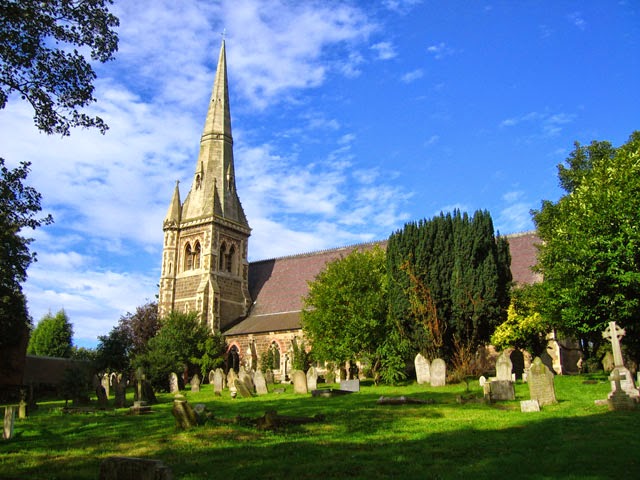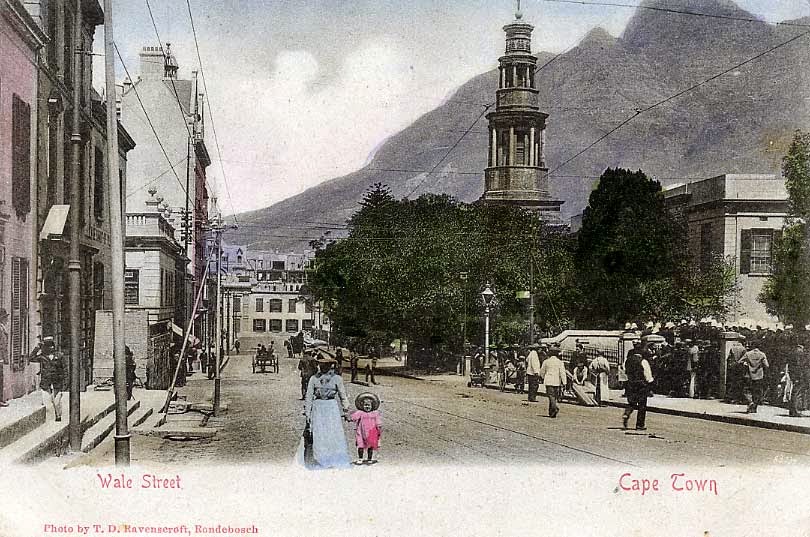The unstoppable
Ethel had completed yet another perilous voyage, this time into a little
explored interior, possibly even into her inner self. A few years ago I
completed a Masters Degree assignment using three of the postcards she sent
home to England between
November 1914 and November 1915, dates which we know from her Journal were
significant in her decision to leave Adelaide.
It seemed to me that she was unconsciously constructing two ‘selves’ – one in
the messages home, and another who was experiencing life as a possible ‘new’ Australian.
I don’t think it too far-fetched to suppose that she wanted to present herself
to Minnie and the rest of the family back home in wartime England as a dutiful
daughter undergoing her own kind of suffering. But some of the Journal entries
reveal that she had been sampling the delicious excitement of exploring alien
cultures and lifestyles. Oodnadatta would provide even more of these, as we
shall see.
The first
postcard I analysed was dated November 18th, 1914, and sent from 81 Angas Street, Adelaide.
The house still stands to this day, and is home to a charity supporting
survivors of torture and trauma. This elegant, balconied colonial building is evidently one of the homes in which she was employed after
she left Woodside. The picture on the postcard is a montage of happy, largely
female, faces squeezed into the word ‘souvenir’, and quite a contrast to the
message on the reverse:
…just to wish you all a Happy Xmas and
Prosperous New Year. Would enclose Money Order for Grandma but nothing is safe
to cross the Sea at this critical Time…
Ethel gives the
impression that life in the city is proceeding normally, and she is obviously
earning enough money to be able to consider sending some home. The traditional
seasonal greetings remind us of the notion that many expected hostilities to be
over by Christmas. But the underlying truth was starker: in France, where her brothers Charley and Tom were
serving, the Battle of the Marne had taken place
in the September, and the first Battle of Ypres, Flanders,
had occurred in the October. No doubt news had reached Australia by telegraph, so it can
be expected that these events were a concern to Ethel. The sea she had crossed
with such high hopes in 1913 had now become unsafe. And bear in mind her
Journal entry for November 1914 where she records her ups, downs and
misfortunes – these she kept hidden from her family, who would not be able to
read that document for many years, if at all.
The second
postcard I believe to be more deeply ‘encoded’ than the first, given what we
know of Ethel’s true frame of mind. On the reverse of an image showing “Natives
bathing, River Murray” Ethel gives no address, simply the date, August 11th
1915, by which we know from her Journal that she was still in Adelaide. But was she still at the house in Angas Street, or
elsewhere? The meticulously penned message is framed in formal language:
My dearest Sister Minnie thank you for kind
letter of today, I am hurrying to catch the mail which leaves to-day for England
so P.C. is written quicker. I feel it most keenly not hearing from Brother Charlie, a letter from him is
due to me however I will drop him P.C. to follow on to his destination. This is
a view of South Australia
in the Country, one does not see a native very often in the City, occasionally
one meets one. With fondest Love to you all. Your affectionate Sister
Ethel xxxxxx
Yet we know she
is in turmoil, desperately looking for a way out, and will be in Oodnadatta
exactly one month later. She makes her written ‘self’ present on both the home
front in Staffordshire, and the battlefields of Europe,
whilst planning her flight to the red desert of the Outback.
For me the third
postcard is the most densely inscribed, both in content and meaning, especially
when juxtaposed with the corresponding Journal entries. I query Ethel’s purpose
in the closely-heaped detail:
Oodnadatta, Far North, South Australia Nov: 8th 1915
My Dearest Sister Minnie this is a View of
the whole township of Ood: White
buildings are the kind of houses we live in, largest one in corner is the only
Hotel here, next are the shops, where we obtain groceries, (such as we can get)
one is almost starved here, unable to obtain anything fresh. Note camels with
loads and one black fellow, there are a few white people but majority of
dwellers are Natives. There [sic]
Huts stand back but you cannot detect them. Wishing you all a Happy Xmas and
Prosperous New Year by the time this reaches you Yule Tide will once more be
here. Fondest love from Sister Ethel
xxxxxx
Is she
attempting to draw closer to her family by sending the bleak image of a near
god-forsaken prospect, and confiding her experiences as a pioneer of the
Outback? It is not clear if she wants to share her hardships – “almost starved
here” – or to set up an insurmountable barrier of alienation. The war has three
more years to run, though of course Ethel cannot know that. But she has already
witnessed the effects of hatred and bloodshed. The journey into the desert has
removed her from much of the modern world. The address itself, with its
aboriginal name and the distancing effect of the phrase “Far North”, is a
prelude to a catalogue of otherness confirmed by the view of the township
below: the unfamiliar red and dusty ‘Martian’ landscape, the white buildings
resembling tents, the camel train, the sole child by the winch, the Aboriginal
man in western attire, all might have filled Minnie and Grandma with pity and
horror, were it not for Ethel’s seasonal greetings. Yet we are left to
conjecture what kind of Christmas celebrations, her third in Australia, could
be mustered in the burning heat of a desert ‘winter’, with little to eat, and
that only brought in on the ‘fortnightly train’ mentioned in the Journal entry
for 26th October 1915.

Two entries in
her Journal on October 26th and 31st, 1915, I found
particularly moving and revealing. Ethel writes of her direct encounters with the
Afghan families who operated the camel trains in the desert. She is allowed to
hold a three-day-old baby, and it must have driven home to her the conditions
endured by these people who, like her, were experiencing life in a ‘strange
land’. A second visit to their camp brings her face to face with “a white woman
residing there, who was married to an Afghan”. Ethel comments that “she seems
quite happy and reconciled to her Fate, though banished from all her
Relations.” Yet Australia
must have been teeming with other examples of mixed marriage, even in the urban
areas. In spite of it being a British Dominion, the country was a mixture of
many races and cultures: there were the Aboriginals, largely ignored and abused
by the Europeans; Turks; Irish; Germans; Afghans; the dominant British. Perhaps
Ethel was beginning to feel within her the stirrings of an Australian ‘self’.
Did she doubt that she might be able to return to England? If so, she might even
become banished from her own relations there, having to adjust to an altogether
different life.
One of the many
imponderables is what significance the three postcards have now. Since the
early 1990s, when they have been able to be considered side by side with the
Journal, they have revealed a different Ethel from the one who apparently
existed for her family during the first years of the war. When the three
postcards arrived in England they would doubtless have been passed around for
all to read, maybe even propped on the mantelpiece, picture side out, for visiting
friends to peruse and comment on. They directly conveyed the stoical,
family-oriented Ethel into the bosom of her admiring domestic circle. Out on
the fringes of the Simpson Desert, however,
there was an altogether different woman, who had ‘gone walkabout’ into another
culture, another time. The Journal remained, for many years, a record of the
secret self which Ethel could have chosen to reveal or annihilate at any point.
The abrupt end
to the Journal in December 1915 leaves us with many questions. The final entry
sees Ethel, and friends, apparently going deeper into the outback, by train, on
foot, meeting sheep farmers starved of social contact, and Aboriginals
naturally suspicious of these questing Europeans. Who were these friends? How
had she met them? Were they employers or comrades? Did Ethel see herself as one
of those female explorers about whom Martha Vicinus has written? Or was she
just killing time until she had the chance to return to Staffordshire? We, of
course, know that the war would end in 1918. But, at some moment, she and her
companions must have received the news, and she made her way back to
‘civilisation’ and a port from which to voyage back to England.
















